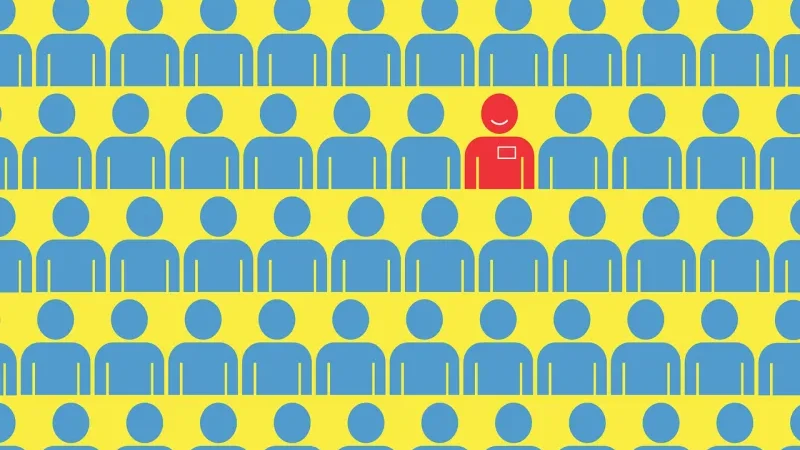The growing focus on workplace diversity and inclusion in recent years has resulted in increasing attention on subconscious bias and the role it can play in workplace relationships, conflicts and investigations. Subconscious biases are social stereotypes that can influence how one perceives and behaves around certain people as a result of their upbringing, life experiences and media influence.
These biases aren’t inherently ‘bad’ – they serve an evolutionary purpose and help us make faster decisions in high-pressure moments. However, if left unchecked, they can influence our perceptions in a manner that limits our ability to understand or connect with certain events, sentiments and people.
When it comes to the workplace, this can be particularly damaging in terms of recruitment decisions, workplace culture, creativity and innovation. For example, one study by Raconteur showed that in a group of candidates with identical resumes, those of white British origin had a positive response rate that was 60% higher than applicants of ethnic minorities.
For employers, combatting subconscious biases by trying to spot them in their own and others’ behaviour can help them make more informed decisions within the workplace and outside of it. However, understanding and recognising these biases in their many forms isn’t always straightforward. This article will break down some of the key biases that can influence our perceptions and actions in the workplace.
Types of Subconscious Bias in the Workplace
1. Affinity bias
Affinity bias is centred around the idea that humans are naturally inclined towards those who share similar backgrounds, interests, beliefs etc. It stems from the comfort and general ease that people experience around those they feel connected to or relate with on some level. However, a byproduct of this tendency is that we can also unconsciously avoid, exclude and/or reject individuals who seem different to us.
Affinity bias is most prevalent in the workplace when it comes to the recruitment process, employee promotions and career opportunities. Take, for example, a hiring manager who feels inclined to offer an interview to a candidate because they attended the same college as them – this type of behaviour can discourage the formation of a diverse and inclusive workplace.
Common examples of affinity bias in the workplace include:
- Overlooking an employee deserving of promotion in place of someone else with who you “get along” better with
- Offering better work and career opportunities to employees which you’ve mentored or worked with in the past
- Offering more praise and recognition to employees you like or connect with
- Hiring certain candidates because your backgrounds are similar or you have shared interests
- Being dismissive of new ideas or perspectives because it comes from someone you are not comfortable with
2. Appearance bias
Humans instinctively make assumptions about people based on their physical appearance – whether it be based on their height, weight, skin colour, clothing etc. Whilst making recruitment and other workplace decisions based on one’s physical features is inevitable and necessary for jobs that require certain traits (e.g. modelling), it can become problematic in industries where appearance has no impact on one’s abilities and skillsets for a role. In most corporate workplaces, ensuring that appearance based subconscious bias doesn’t influence how an individual is treated or valued is important in preventing discriminatory behaviour.
The most common form of appearance bias is commonly referred to as ‘beauty bias’, where individuals who are considered more conventionally attractive receive more positive treatment, better work opportunities and are thought to be morally superior to others. Upon making mistakes, they are also less likely to be found guilty and/or given lighter workplace discipline than others would have received in the same position. Another common form of appearance bias, one that particularly impacts males, is height bias – taller people are considered to be more confident, capable and possess stronger leadership qualities.
These superficial subconscious biases can not only impact employee wages, relationships and career growth but also the organisation’s ability to mitigate discrimination and effectively utilise talent, and potential.
3. Confirmation bias
Confirmation bias is the tendency to seek out and interpret new information in a way that confirms what you already believe. For example, if you believe that left-handed people are more creatively inclined, then you are more likely to think of them this way and even seek out information to confirm this assumption (e.g. if they are wearing very colourful and patterned clothing you may see this as another expression of their creative inclination and connect their left-handedness to it).
This form of bias shows that our perception of people, events and ideas is very subjective and dependent on the personal prejudices and assumptions we hold. As a result, confirmation bias has a direct impact on our decision making and keeping it in check is vital towards remaining as impartial as possible.
However, trying to overcome it is extremely difficult, in both one’s personal and professional life. It behaves subtly, often without malicious intent, and is difficult for individuals to acknowledge even when voluntarily attempting to reflect on their behaviour. Employers can prevent and mitigate the consequences of confirmation bias by improving their recruitment procedure, stirring up constructive workplace debates and making sure that investigations remain neutral.
4. Gender bias
Gender bias is the tendency to make assumptions about a person’s skillset, potential and personality based on their gender. In workplaces, gender bias can create issues in several different areas including recruitment, promotions, investigations, salaries and employee dynamics. It also impacts women notably more than men- one study found that 42% of all female employees experience gender discrimination at work, despite having the same capabilities as their male co-workers.

To help prevent gender based subconscious biases from impacting workers, employers can employ what is referred to as ‘blind evaluation’, which utilises a recruitment tactic where a person’s physical attributes are hidden so that the focus remains on their skillset and experience. Whilst this may not prevent gender bias from interfering later in the application process, it does eliminate bias from the initial stage. For a company, this can help grow a more skilled workforce and also tackle the issues of affinity and appearance bias mentioned above.
5 . Attribution Bias
Attribution bias is the tendency to use different rationale for your behaviour versus that of others – essentially it’s where our brain tries to explain the actions or experiences of others by making assumptions about their personality and abilities. It usually takes the form of explaining others’ mistakes or failures as due to their character, while attributing their success to external factors and having the opposite tendency ourselves – attributing our successes to personal character and our failures to circumstance.
For example, when I am late to work I might put it down to unexpected traffic or having understandable family pressures in the morning, however, when my employee is late I might put it down to them being lazy or disorganised. The problem with this is that our subconscious biases generally do not take into account all the facts of the situation and result in a narrative that doesn’t represent the truth which can be detrimental to the work culture of a company.
Subconscious biases exist for every individual and will always have an influence on the way we perceive the world around us. For employers, the aim in the workplace should be towards educating yourself, building personal awareness about your biases and providing opportunities for your employees to do the same. This will help combat stereotypes that happen in (and outside of) work and create a more diverse, welcoming, and effective work environment for all.
However, it’s important to note that whilst promoting awareness of subconscious biases is important and necessary, employers must also ensure that their organisations have the appropriate policies, processes and frameworks to ensure a diverse workplace culture.
Let's Get Started
Interested in learning more about how Polonious can help?
Get a free consultation or demo with one of our experts




